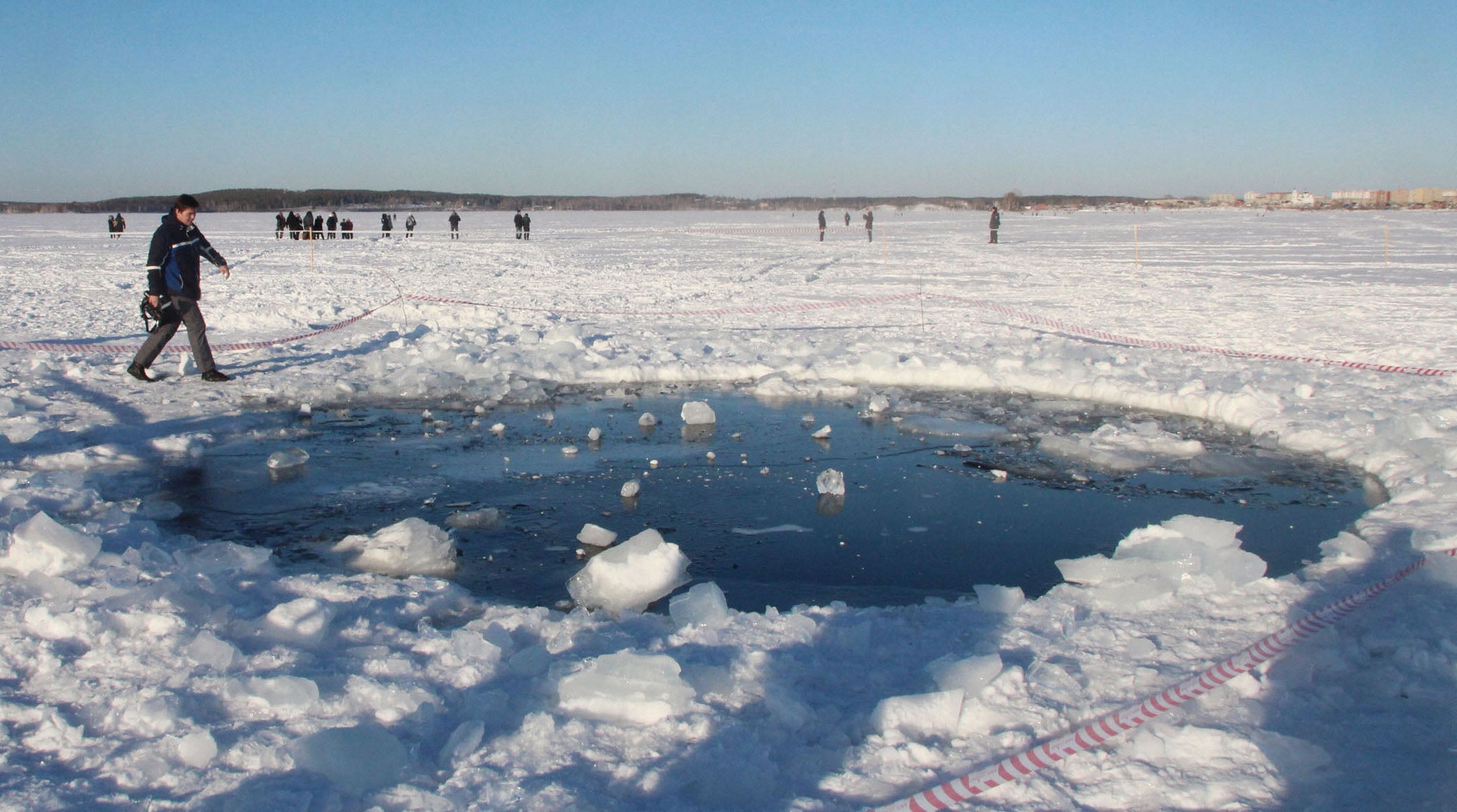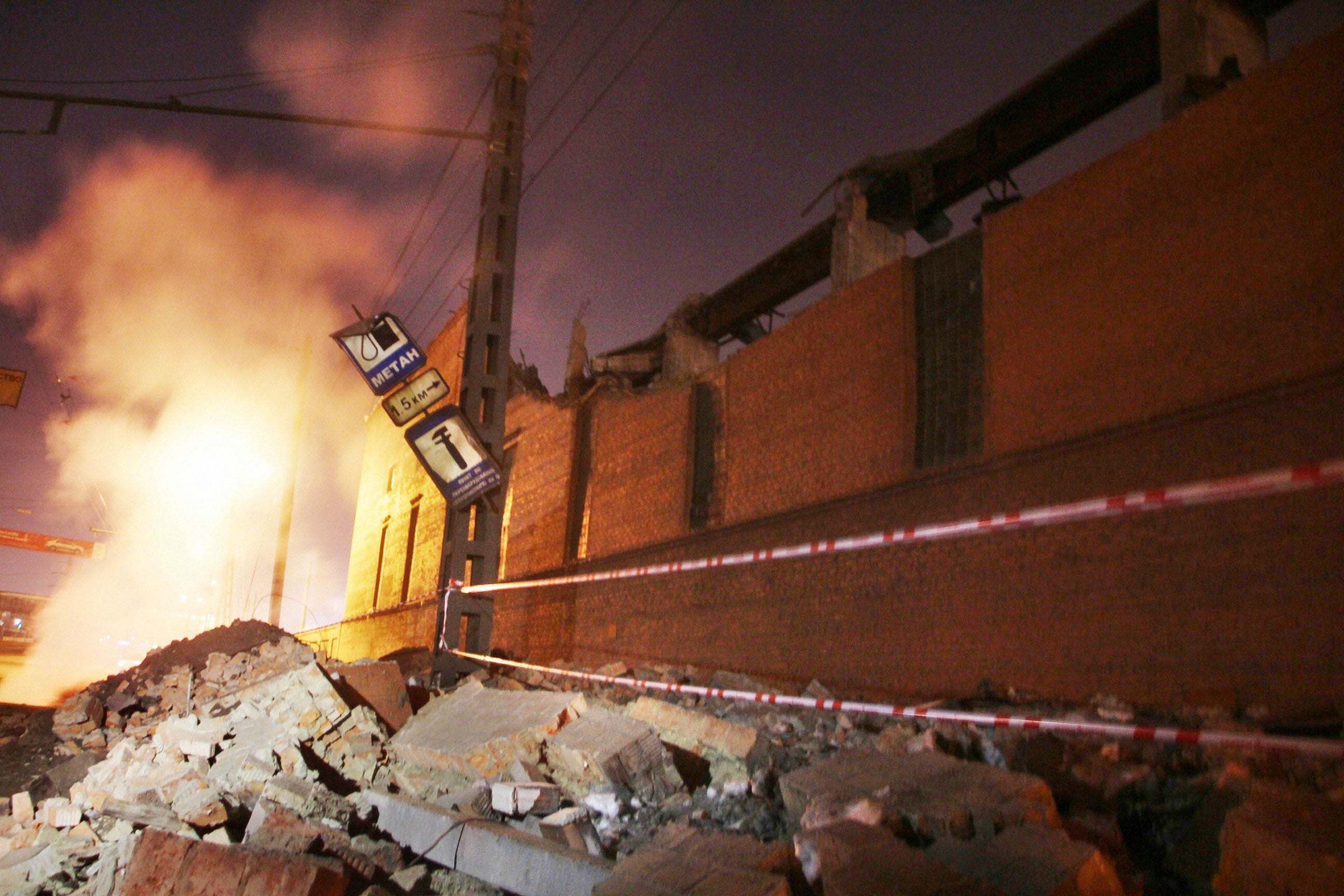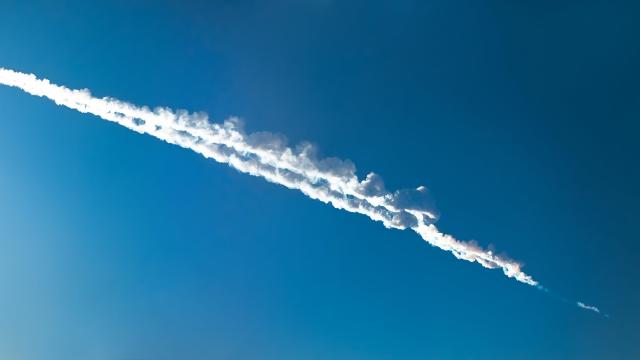A decade ago today, the city of Chelyabinsk, Russia unexpectedly found itself under assault from space, as a roughly 18.29 m-wide asteroid exploded over the region. It was a shocking reminder that our planet can be struck at any time — and future impacts could be a lot more serious.
The asteroid entered Earth’s atmosphere on February 15, 2013, and the fireball was captured by security cameras, vehicle dashcams, and the smartphones of eyewitnesses around Chelyabinsk. Soon after came a deafening shockwave and sonic boom, which damaged buildings, set off car alarms, and injured around 1,600 people.
The event was a dramatic wakeup call about the importance of planetary defence. This rock wasn’t a major threat to humanity, but the next one might be. In the 10 years since, our ability to detect small asteroids has improved. NASA has even experimented with ways to deflect incoming asteroids that might pose a threat, with the recent DART mission to smash into a small space rock. DART successfully moved its target asteroid, demonstrating a potential solution in defending Earth.
Click through for videos and images of the Chelyabinsk meteor strike.
The meteor exploded over Chelyabinsk, Russia, on February 15, 2013, at around 9:20 a.m. local time.
NASA says that the meteor was travelling around 18 km per second when it entered the atmosphere.
Cameras across Chelyabinsk captured the fireball.
The resulting shockwave broke windows around the city.
Fragments of the asteroid impacted the ground.
These fragments are called meteorites.

One fragment left a 7.92 m-wide hole in the ice of Chebarkul Lake.

While no one was killed, the shockwave and fragment impacts damaged structures.

Over 1,600 people were injured by broken glass and other structural damage.
NASA said that the explosion released as much energy as 440 kilotons of TNT.

The meteor sent a plume of debris into the atmosphere, which NASA tracked with satellites.
The Ozone Mapping and Profiler Suite aboard the Suomi NPP satellite was able to study the plume’s migration through the atmosphere. Observations from the satellite showed that the plume travelled approximately 4,300 kilometres east of the explosion site in one day. Four days after the impact, debris had travelled around the globe, back to Cheylabinsk.
